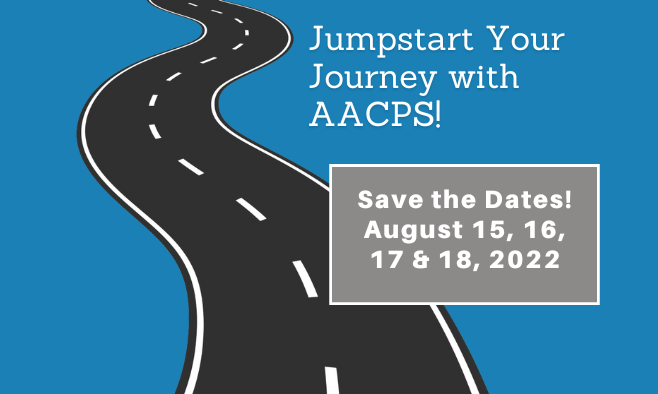
To teach the 3 Times Table, there are many teaching resources. They are top-quality and contain many years of teaching tips. They include visually stimulating materials and vibrant images that keep children engaged. Here are 3 ways you can make times table 3 fun and engaging for your students. You can also create learning games for your students to test their knowledge. Also, don't forget about trying them out in a classroom.
Learning the 3 times table
There are many ways you can practice the three times table. You can practice your 3 times table either in a sequential or random order. It is also possible to practice the 3 times table on your mobile phone, tablet or PC. You can also print the worksheets so you can work on them when you have time. You can make learning the three times table as simple as possible by first memorizing it. It will be a key to year four maths.

Do it!
Practice the times tables with elementary school children is very helpful. There are many ways to practice this multiplication skill, from practicing a specific table to doing it on the internet. You can practice times tables in a variety of ways. The faster you are at remembering the numbers in a times table, the more practice you do. Here are some ways you can practice times table 3:
It is important to recite
It is simple to remember three times tables. It doesn't take much to learn a new trick. The multiples of 3 in a multiplication table are an even mixture of numbers. The difference between the two results is three. Recite the times table three for easy and efficient recall of math facts. Along with learning the timestable, you can also practice multiplication problems and addition with your child. This method of memorizing the times table will help you remember the patterns of 1, 3, 6, and 9 with ease.
Create a game
If you want to teach your child how to do times tables, why not create a game? The multiples of 3 are a useful subject to study as well as a fun way to reinforce the material. You can create a gaming game with your tablet or computer. Choose a game that's suitable for your child and has the times table. The game will be a hit with children if they love solving equations and the challenge of completing it.
Ask questions at the multiplication chart
The multiplication chart should allow you to ask questions. For example, how often is seven times six-times ten? The answer is 21. Next, divide the answer by 2 and you will find the product. You will notice that the product you get is twice the original number. This principle can be used to solve other multiplication problems. A multiplication chart has 81 entries. However, you don't need to memorize them all.

Make it enjoyable
There are many ways that you can make times table 3 entertaining for your child. You can keep your kids entertained while learning by using the 3 times table activities below. Play 3 Times Table Bingo. Have your students answer the six questions and then give the correct answers. Another way to make times table 3 fun is to hang bunting with the 3 times table sums as decorations. Humpty Dumptys Wall Multiplying by Three Worksheet is another enjoyable activity. Players will roll the dice and add up the sums by rolling the dice.
FAQ
What are the different types of early childhood education?
There are many ways to describe early childhood education. Here are some of the most commonly used ones:
-
Preschool - Children ages 2 to 5
-
PreKindergarten: Children 4-6 years old
-
Head Start/Headstart for Children Ages 0-3
-
Day Care/ Daycares for children 0-5
-
Child Care Centres - Children from 0-18 Years
-
Family Child Care - Children from 0-12 Years of Age
-
Home Schooling - Children ages KG to 16
What is the difference of a college and university?
A university provides higher education. It offers postgraduate and undergraduate courses in a variety of fields.
A college is typically smaller and less well-known than a university. It may offer fewer courses but often has its own specialist departments.
How can I get scholarships?
Scholarships are grants awarded to help pay for college expenses. There are many types to choose from. These are:
-
Federal Grants
-
State Grants
-
Student Loans
-
Programs for Work Study
-
Financial Aid
Federal grants come directly from the U.S. government. Most federal grants require applicants fulfill certain requirements. To demonstrate financial need, applicants must meet certain requirements.
State grants are offered by individual states. Some states offer these funds based on financial need; others award money for specific reasons.
Banks and other lending agencies can provide student loans. Students borrow money to pay tuition and other living expenses.
Employers are encouraged to employ qualified students through work-study programs. Employers are required by law to pay minimum wage.
Financial aid helps low-income families afford college by covering most or all tuition costs.
Do you have to go to college in order become an early education teacher?
It is not possible, however, to better prepare yourself for your future career in this field, it might be worth looking into college.
It's important to note that becoming a teacher isn't easy. Every year, many people are rejected. In addition, many people quit after just one semester of college.
A teacher must meet all requirements.
Statistics
- In most developed countries, a high proportion of the population (up to 50%) now enters higher education at some time in their lives. (en.wikipedia.org)
- Data from the Department of Education reveal that, among 2008 college graduates, 92.8 percent of humanities majors have voted at least once since finishing school. (bostonreview.net)
- “Children of homeowners are 116% more likely to graduate from college than children of renters of the same age, race, and income. (habitatbroward.org)
- These institutions can vary according to different contexts.[83] (en.wikipedia.org)
- Among STEM majors, that number is 83.5 percent. (bostonreview.net)
External Links
How To
Why homeschool?
When choosing whether to homeschool or send your child to school, there are several factors to consider.
-
What type of education are you looking for? Are you seeking academic excellence? Or social skills development for your child?
-
How involved would you like to be in the education of your child? Do you prefer to keep informed about the activities of your child? Would you prefer to be informed about your child's activities? Or would it be better for you to let them make their own decisions?
-
Are there special needs that your child has? What can you do to help your child with special needs?
-
Will you be able to manage your child's schedule? Are you able to commit to teaching your child at-home every day?
-
What subjects will you be covering? Math, science, language arts, art, music, history, geography, etc. ?
-
How much money do your parents have available for education?
-
Is it possible for your child to start school at an early age?
-
Where will you house your child? You will need to find a place large enough for your child's classroom and provide adequate facilities like bathrooms and kitchens.
-
What is your child's age?
-
When does your child go back to sleep?
-
When does he/she finally wake up?
-
How long does it take for you to get from A to B?
-
How far away is your child's school?
-
What is the distance between your home and your child's school?
-
How will your child get to and from school?
-
What are some of these benefits?
-
What are their disadvantages?
-
Who will look after your child outside?
-
What are your expectations of your child?
-
Which discipline will you choose?
-
What curriculum will you use?
Homeschooling can be done for many reasons. Here are some of the reasons.
-
Your child has learning difficulties that prevent him/her to attend traditional schools.
-
You are looking for an alternative method of education for your child.
-
You require more flexibility in your scheduling.
-
You want to avoid paying high tuition fees.
-
You think your child is receiving a better education in this school than you would receive in a traditional setting.
-
You believe you are better at teaching your child than a teacher in traditional schools.
-
You don't love the way the school system operates.
-
You are not comfortable with the school's regulations.
-
Your child should have a strong work ethic.
-
You want your child to have the freedom of choosing which courses they take.
-
You want your child to receive individual attention.
Another benefit of homeschooling is:
-
You don't need to worry about supplies, uniforms, books or pencils.
-
You have the option to customize your child’s education according their interests.
-
Parents can homeschool their children and spend time with them.
-
Students who have been homeschooled learn better because they're not distracted by peers.
-
Homeschoolers often score higher on standardized tests.
-
Homeschool families tends to be happier overall.
-
Homeschool students are less likely not to drop out.